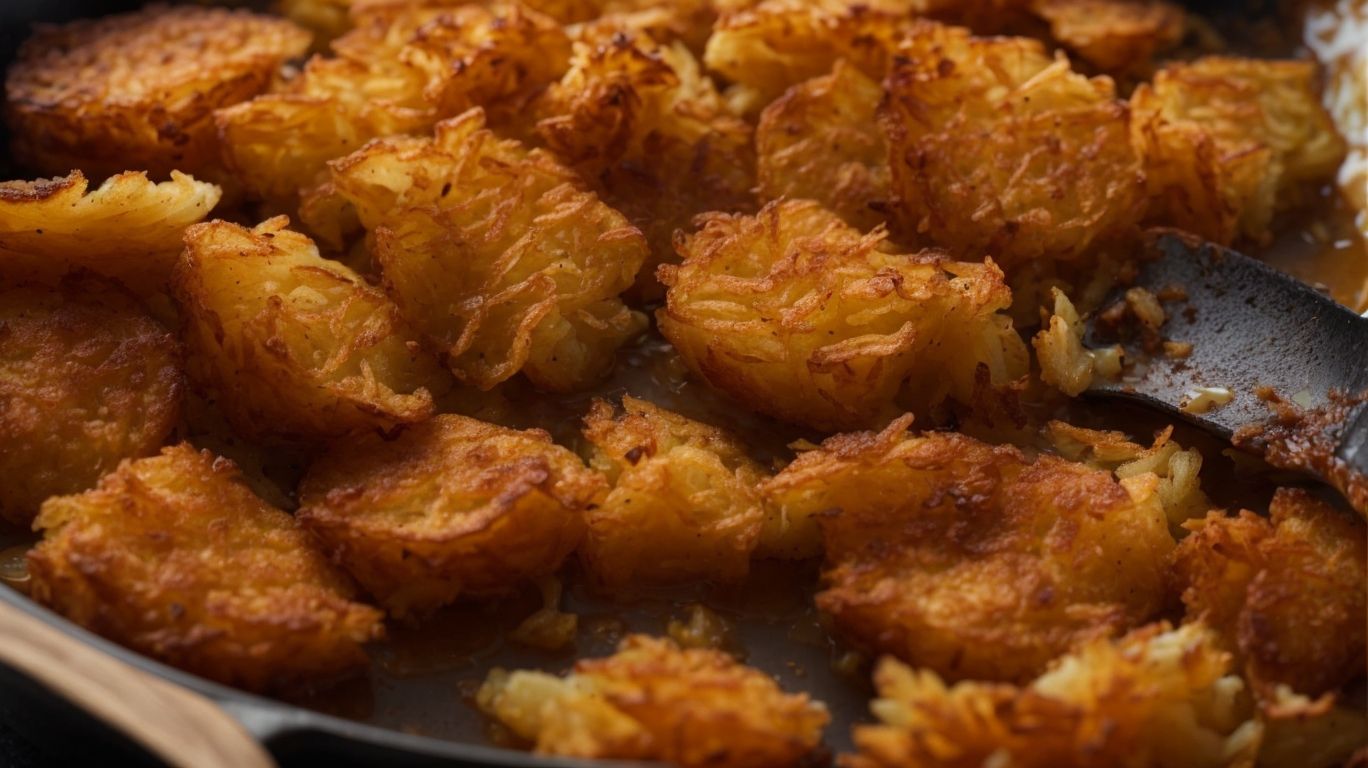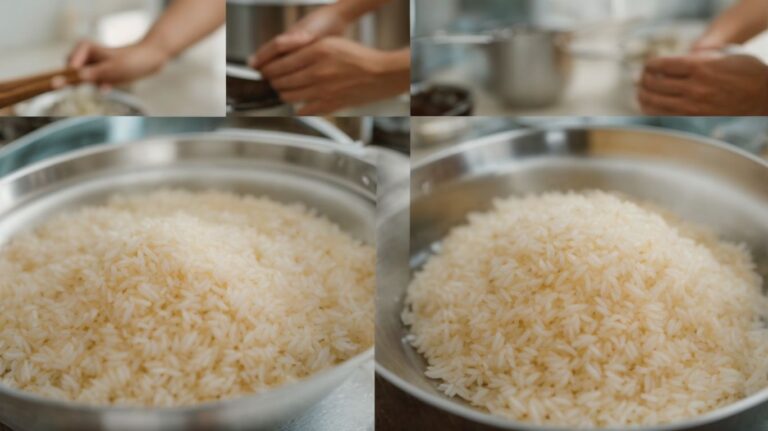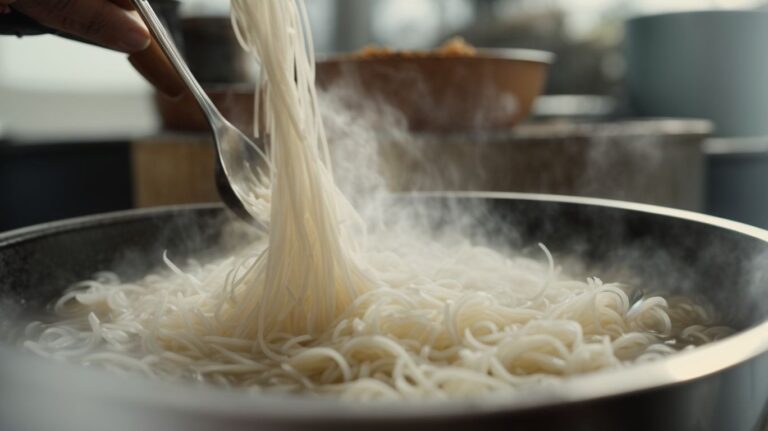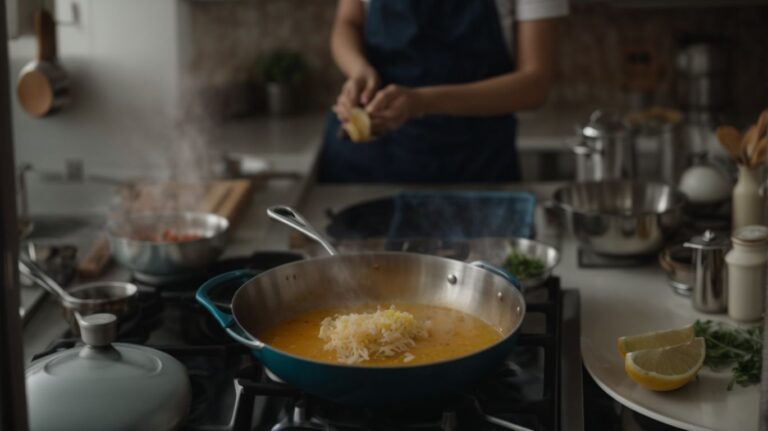How to Cook Hash Browns Without Sticking?
Are you a fan of crispy, delicious hash browns but always struggle with them sticking to the pan?
We discuss what hash browns are, the different types available, and why they tend to stick while cooking.
Discover helpful tips on how to prevent your hash browns from sticking and tricks for achieving that perfect crispy texture.
If you want to elevate your breakfast game, keep reading to learn all about making the perfect hash browns!
Key Takeaways:
What Are Hash Browns?
Hash browns are a popular breakfast dish made from shredded or grated potatoes that are typically fried until crispy and golden brown.
These delectable creations often include ingredients like onions or bell peppers, adding extra flavor and texture to the dish. The key to achieving the perfect hash browns lies in properly preparing the potatoes to ensure they are dry before cooking. This can be done by soaking them in water and then squeezing out the excess moisture using a clean towel or paper towel.
Once the potatoes are dried, they are seasoned with salt, pepper, and any desired spices before being fried in a skillet with oil or butter until they develop a crispy exterior. Variations of hash browns can include adding cheese, bacon, or even mixing in sweet potatoes for a unique twist on the classic recipe.
Different Types of Hash Browns
There are various types of hash browns, including crispy hash browns cooked in a non-stick pan for that perfect golden finish.
Regarding making hash browns, achieving that desired level of crispiness is essential for many. To get that irresistible crunch on your hash browns, you can experiment with different techniques like using shredded potatoes or incorporating toppings like cheese or bacon for added flavor and texture. Varying the thickness of the potato shreds can also affect the overall texture of the hash browns. Some people prefer thicker shreds for a softer interior, while others opt for thinner shreds for a crispier bite. Experimenting with ingredients and techniques can help you find your perfect crispy hash brown recipe.
Why Do Hash Browns Stick to the Pan?
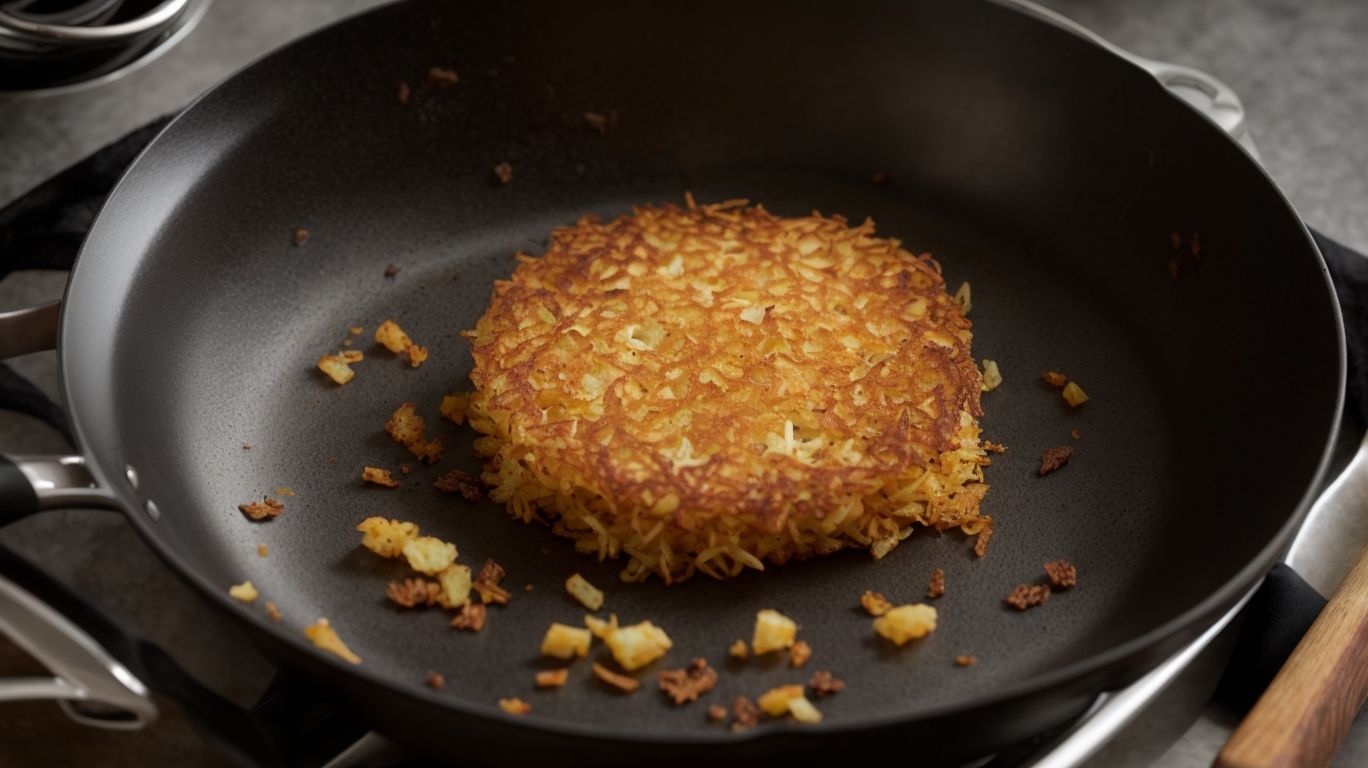
Credits: Poormet.Com – Billy Walker
Hash browns may stick to the pan due to the presence of excess moisture in the potatoes, leading to difficulties in achieving that desired crispy texture.
When grated or shredded, potatoes release moisture which, if not properly drained or squeezed out, can create steam during cooking. This steam hinders the browning process, resulting in the hash browns becoming soft instead of crisp.
Ensuring that the grated potatoes are thoroughly dried before cooking can significantly reduce the risk of sticking. Using a hot and well-oiled pan can help create a sear on the exterior, forming a barrier against sticking. Cook the hash browns until they develop a golden crust to enhance the overall flavor and texture.
Factors That Contribute to Sticking
Several factors contribute to hash browns sticking to the pan, but with the right techniques, you can prevent this issue and achieve perfectly cooked hash browns.
One common cause of hash browns sticking is placing them in a cold pan, which leads to uneven heat distribution, resulting in them getting glued to the surface. Not using enough oil or butter in the pan can also cause sticking. Overcrowding the pan with too many hash browns can make it challenging to flip them and end up with them sticking.
- To prevent sticking, ensure the pan is preheated before adding the hash browns, so they start cooking immediately and do not stick. Another tip is to generously coat the pan with oil or butter to create a non-stick surface. Give enough space between each hash brown in the pan to allow for easy flipping and prevent them from sticking together.
How to Prevent Hash Browns from Sticking?
To prevent hash browns from sticking to the pan, it’s essential to follow specific steps such as preheating the pan and using the right amount of oil or butter for cooking.
Another crucial factor in preventing hash browns from sticking is ensuring that the pan is adequately seasoned or non-stick. A well-seasoned pan creates a natural barrier between the potatoes and the surface, reducing the chances of sticking.
Before adding the hash browns, test the heat of the pan by sprinkling a few drops of water; if the water sizzles and evaporates quickly, the pan is ready. Once the pan is hot, add the oil or butter and spread it evenly across the surface using a spatula. This helps in creating a slick surface for the hash browns to cook without sticking.
Preheat the Pan
Preheating the pan before adding the hash browns is crucial to ensure that the potatoes cook evenly and develop a crispy exterior.
When the pan is properly preheated, it allows the starches in the potatoes to quickly form a golden crust, sealing in moisture to create that perfect crunch. The heat from the preheated pan also kick-starts the caramelization process, enhancing the flavor profile of the hash browns. Without preheating the pan, the risk of soggy, unevenly cooked hash browns increases, leading to a less satisfying dish. So, take the time to preheat your pan to create hash browns that are crispy on the outside and fluffy on the inside.
Use the Right Type of Pan
Choosing the right type of pan, such as a non-stick skillet, can significantly reduce the chances of hash browns sticking during the cooking process.
Regarding cooking hash browns, the non-stick skillet offers a smooth surface that promotes even heat distribution, resulting in perfectly cooked, crispy potatoes without the risk of burning or sticking. The non-stick surface requires less oil or butter, making it a healthier option for preparing this classic dish. The effortless food release from the pan also makes cleanup a breeze, saving you time and effort in the kitchen.
Use Enough Oil or Butter
Ensuring that you use an adequate amount of oil or butter when cooking hash browns can help prevent them from sticking to the pan and achieve a crispy texture.
Oil and butter play crucial roles in hash brown preparation beyond just preventing sticking. They serve as flavor carriers, enhancing the overall taste profile by providing richness and a hint of savory goodness. The oil or butter aids in achieving that desirable golden-brown hue on the hash browns, adding visual appeal to the dish. The right amount of these fats ensures that the hash browns cook evenly and develop that irresistible crispy exterior while maintaining a soft interior texture.
Let the Hash Browns Cook Before Flipping
Allowing the hash browns to cook undisturbed for a sufficient time before flipping them is key to ensuring a crispy and evenly cooked result.
It’s essential to resist the temptation to constantly check on the hash browns as they cook. Patience is truly a virtue in this process. The first side needs ample time to develop that golden crust that harbors all the flavor. Depending on the heat level, this typically takes about 5-7 minutes. A useful tip is to gently lift a corner of the hash brown to peek underneath to gauge readiness – it should be a deep golden brown.
Use a Spatula to Loosen the Edges
Gently using a spatula to loosen the edges of the hash browns can help prevent them from sticking to the pan and make flipping easier.
This simple technique not only ensures that the hash browns don’t stubbornly cling to the pan, avoiding that dreaded moment when half the crunchy goodness remain stuck while the other half ends up on the spatula, but it also facilitates a smoother flipping process. By gently sliding the spatula underneath the potatoes, you create a seamless motion that allows you to effortlessly flip them over, revealing that perfectly golden-brown crust on the other side. It’s truly a game-changer in the kitchen, transforming the cooking experience from a potentially sticky situation to a seamless, enjoyable process!
Tips for Making Crispy Hash Browns
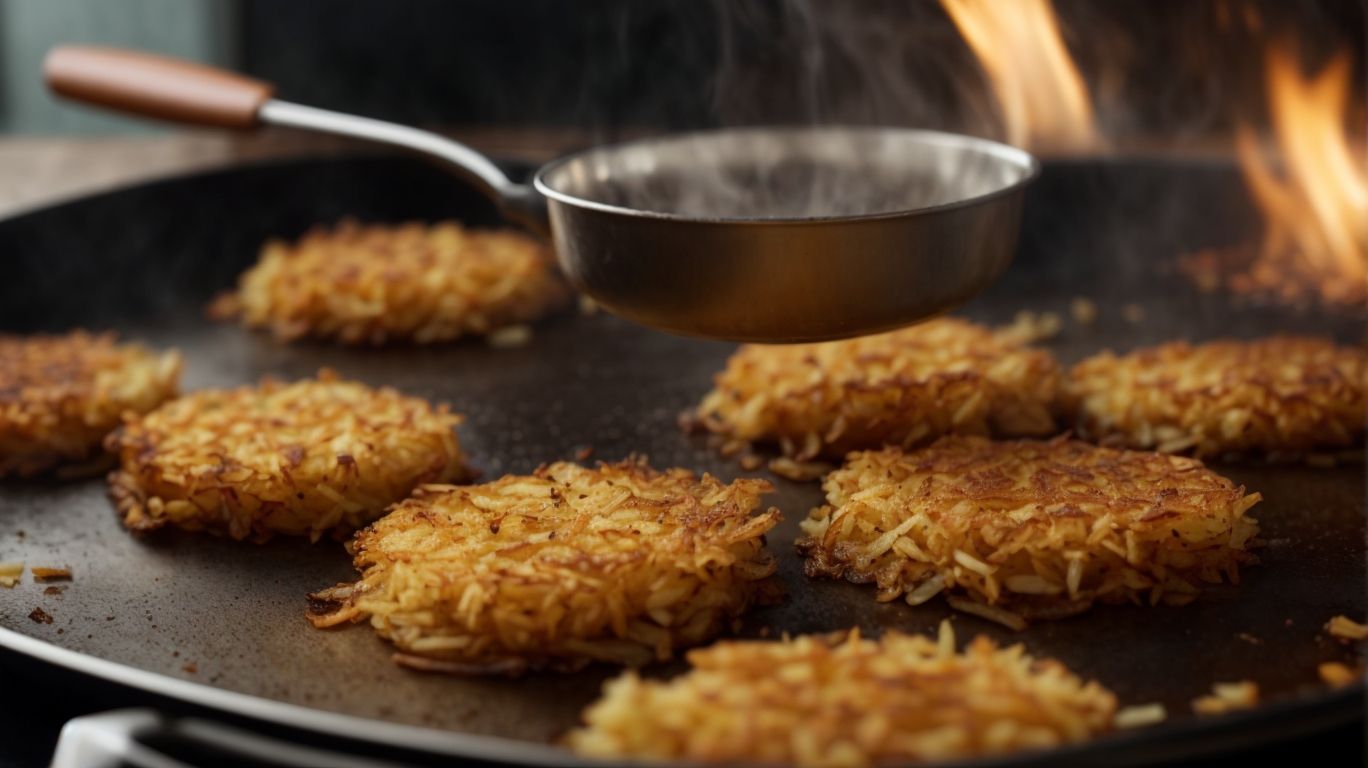
Credits: Poormet.Com – Nathan Perez
Achieving crispy hash browns involves various tips, such as squeezing out excess moisture from the potatoes and cooking them on high heat to get that perfect golden exterior.
Another key tip to ensure your hash browns turn out crispy is to spread the grated potatoes thinly and evenly on the cooking surface, allowing them to cook and crisp up evenly.
Using a generous amount of oil or butter in the cooking process can help create that desirable crunch on the outside of the hash browns.
Don’t overcrowd the pan when cooking hash browns; overcrowding can lead to steaming rather than crisping, so make sure each piece has enough space to develop a crunchy texture.
Squeeze Out Excess Moisture from Potatoes
Removing excess moisture from the shredded potatoes by squeezing them dry is essential for achieving crispy hash browns with a delightful texture.
Excess moisture in shredded potatoes can lead to soggy, limp hash browns that lack the desired crunchiness. By removing this moisture through squeezing, you allow the potatoes to crisp up properly during cooking, creating a satisfying contrast between the crunchy exterior and fluffy interior.
It’s crucial to take the time to thoroughly dry the potatoes to ensure an evenly cooked and flavorful dish. Dry potatoes not only absorb the seasoning better but also help in achieving that golden-brown color that signifies perfectly cooked hash browns.
Use Starch or Flour to Coat the Potatoes
Coating the grated potatoes with starch or flour before cooking can help create a crispy outside while ensuring the hash browns hold together during the cooking process.
This crucial step of coating the potatoes serves multiple purposes in the hash brown making process.
- When the potatoes are coated, the starch or flour forms a protective layer around each shred, absorbing excess moisture and preventing the hash browns from becoming soggy.
- This coating aids in the browning process by enhancing the Maillard reaction, resulting in a delicious golden crust.
- The starch or flour acts as a binding agent, providing structural integrity to the hash browns, so they don’t fall apart while flipping or serving.
Don’t Overcrowd the Pan
Avoid overcrowding the pan when cooking hash browns to ensure proper heat distribution and allow each piece to crisp up evenly.
When your pan is overcrowded, the hash browns end up steaming instead of getting that perfect golden crispiness. To achieve that desired crunch, make sure to leave enough space between each hash brown in the pan. This spacing allows for heat to circulate evenly, ensuring that every bite is equally delicious.
Remember, the key to achieving the perfect hash brown lies in taking the time to arrange them properly in the pan. It may take a bit longer, but the end result will be worth the effort. So, next time you find yourself cooking hash browns, give them the space they deserve in the pan for that delightful crunch.
Cook on High Heat
Cooking hash browns on high heat can help achieve a crispy and golden exterior while ensuring the potatoes cook through evenly.
When hash browns are subjected to high heat, the starches on the surface of the potatoes rapidly caramelize, forming that irresistible crunch we all love.
This intense heat also expedites the Maillard reaction, which enhances the flavor profile of the hash browns, resulting in a more complex and delicious taste.
The quick cooking time associated with high heat preserves the natural moisture of the potatoes, preventing them from becoming soggy and retaining their desirable texture.
Conclusion
Mastering the art of cooking hash browns to achieve that perfect golden crispiness requires attention to detail, proper technique, and the right combination of ingredients and cooking methods.
One of the key factors in achieving that desired crispy texture in hash browns is ensuring that the potatoes are grated finely, allowing for more surface area to crisp up evenly. Additionally, ensuring the potatoes are dry before cooking is crucial to prevent sogginess and promote crispiness. The choice of oil is also important – using a high-heat oil like vegetable or canola oil can help to achieve that golden exterior without burning. Maintaining the right cooking temperature and not overcrowding the pan are essential to ensure each hash brown gets crisp and golden.
Frequently Asked Questions
How to Cook Hash Browns Without Sticking?
What causes hash browns to stick to the pan while cooking?
The main cause of hash browns sticking to the pan is using too much oil or not properly heating the pan before adding the hash browns.
How to Cook Hash Browns Without Sticking?
What can I use instead of oil to prevent hash browns from sticking?
You can use butter, clarified butter or non-stick cooking spray instead of oil to prevent hash browns from sticking.
How to Cook Hash Browns Without Sticking?
How do I properly heat the pan before adding hash browns?
To properly heat the pan, make sure it is heated on medium-high heat for a few minutes before adding the hash browns. This will ensure that the pan is evenly heated and prevents sticking.
How to Cook Hash Browns Without Sticking?
How do I know when the pan is hot enough to add hash browns?
You can test the heat of the pan by sprinkling a few drops of water on it. If the water sizzles and evaporates immediately, the pan is hot enough to add the hash browns.
How to Cook Hash Browns Without Sticking?
Can I use frozen hash browns instead of fresh ones?
Yes, you can use frozen hash browns. Just make sure to thaw them completely before cooking and pat them dry with a paper towel to remove excess moisture, which can lead to sticking.
How to Cook Hash Browns Without Sticking?
What type of pan is best for cooking hash browns?
A non-stick pan is the best option for cooking hash browns without sticking. If you don’t have a non-stick pan, make sure to properly season a cast iron pan before use to prevent sticking.

